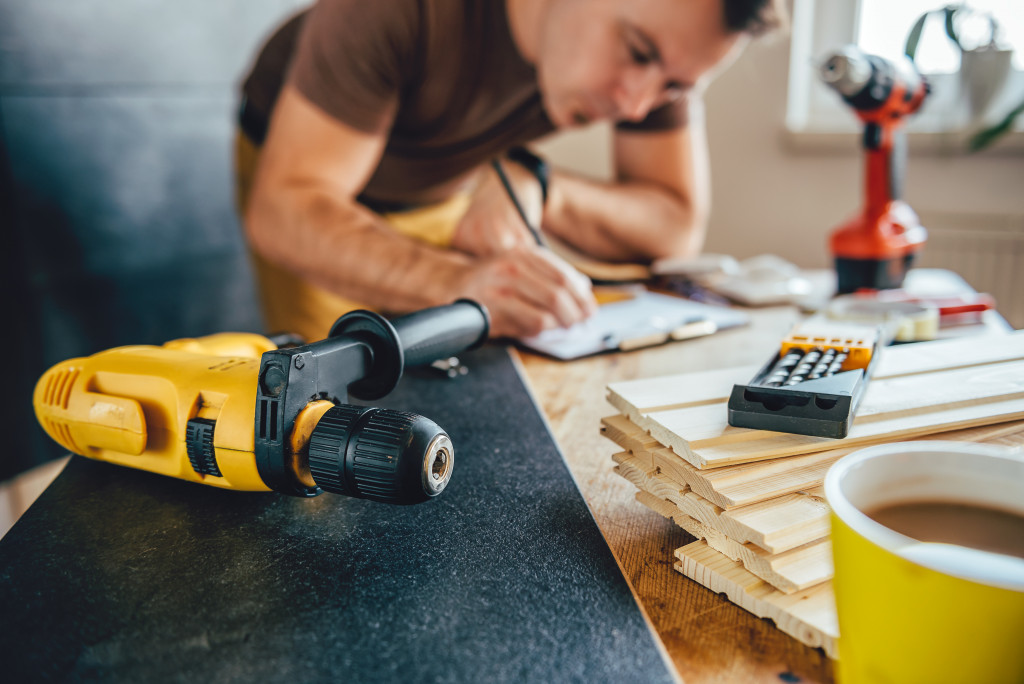The rise of home renovation TV shows has glamorized home improvement itself, causing a huge trend in the construction and real estate industry. More people are taking on DIY improvements to add personal touches to their living spaces. Although TV programs make home renovation look possible to accomplish within a week, applying them in the real world may seem a little different.
Home renovation is a rewarding activity that gives your home a fresher look and bigger value in the real estate market. But renovations are not as easy as it seems; it is fraught with mistakes, failures, or even accidents, ranging from minor injuries to fatal ones. This is where safety equipment and tools come in to reduce the likelihood of accidents.
The home construction industry has personal safety equipment suppliers that offer workwear products designed to protect building workers and DIY enthusiasts from construction-related risks. These products are very important and mean a difference between ensuring safe working conditions or landing at the emergency room.
Whether you’re tearing down the kitchen or redoing the entire house, it’s important to follow safe working measures. There are plenty of dangerous home renovation activities that lead to accidents but can be avoided with little planning and prevention. With that in mind, here are the most common home improvement incidents and ways to avoid them.
Falling from the ladder

Most home projects require climbing a ladder, especially if you’re working on the walls, ceilings, or roofing. Though we’re likely to be cautious when using a ladder, not all of us are aware of the severity of injuries caused by ladders. The most common injuries caused by a ladder fall include severe brain injuries and fractures of the neck, arms, hands, legs, and ankles.
For instance, placing the ladder in the wrong position leads to falling. Others use a metal ladder while repairing electric equipment which can lead to electrocution, causing fall injuries. If you think asking someone to hold the ladder for you prevents you from falling, then you’re wrong. There’s a very slim chance the person holding the ladder will catch or steady a wobbly ladder. Doing this will only endanger both of you.
To avoid ladder-related injuries, follow the 1:4 ratio when positioning the ladder to ensure optimal stability. Do this by positioning the ladder one foot away from the structure for every four feet of height. Avoid balancing the ladder on the wall for extra height; the foot should be placed firmly on a solid surface.
When repairing or installing electric equipment on high ground, use a wooden ladder. Check for loose or broken joints and lock the center brace if you’ll use an A-frame ladder. Lastly, never climb on the highest rung of the ladder and leave enough space for support while working.
Electric shocks
Most homeowners want to avoid costly electrician fees, so they trust their DIY skills. While it saves them from repair fees, taking on electricity-related projects with limited skills and knowledge is a sure-fire way to generate sky-high medical bills.
Electric hazards range from quick, sharp jolts to major surges that can stop your heart from beating. The risks of electrocution are very high on home renovation since most projects often involve the use of electric power tools and working with electric wires. The latter usually happens if the repairer forgets to turn off the circuit breaker when working with an exposed wire or a running electric tool.
Before starting any home project involving live electrical wire, turn off power sources within the area. When in doubt, turn off the main power source to avoid electric hazards completely. Another important reminder is to ensure you have the right skills and knowledge to tackle a project confidently and safely. It’s hard to trust your own abilities when undertaking a hazardous task. The best thing to do is to hire an experienced electrician to ensure quality results.
Cuts
Most home improvement projects require the use of sharp objects, such as blades, saws, machete, nails, scrapper, and knife. These sharp objects are common causes of injuries, leading to serious cuts and laceration. Fingers are often the common targets when using sharp tools, that’s why staying alert and careful is very essential.
A great tip is to use hand gloves and eye protection when working with any sharp object. But wearing the right equipment is still not an assurance that you’re safe from any trouble, because sharp blades can still tear through any material. As much as possible, keep any type of body part away from sharp objects. Another tip is to avoid using dull blades and sharpen saws before using them.
While it’s possible to perform home renovation projects at home, they still come with countless complications that result in injuries. Aside from the examples above, home improvement projects can cause different safety risks that can lead to life-and-death situations. If you need help, don’t hesitate to call a skilled repairer or contractor. These highly experienced professionals ensure safe and quality results while sparing you from any safety risk.
